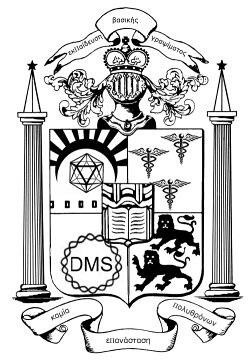"Would Anderson be willing to help test a drug that was based on a poorly understood correlation pulled out of a datamine?" Timmer challenges, apparently unembarrassed to be seen in flagrante putting an ad hominem argument. Of course not, which is why we test on guinea pigs. (And why should Anderson be first?)
But if anything, this is a reason Anderson could use. With sufficiently good correlations, it might finally be possible to spare guinea pigs, chimpanzees, or rats trial by laboratory testing.
Question: Where would those correlations come from? Sole Possible Answer: Mass observation of humans exposed to random doses of random chemicals.* It's not just Anderson that would be testing it. Note also that a good pharma shop will have thousands to millions of different drugs on the shelf.
Quote two:
Yet increasing computing power, both in hardware and statistical analysis algorithms, can still bring forth useful correlations, and new interesting discoveries. Anderson cites Craig Venter's DNA sequencing: having done with sequencing individuals, "in 2005 he started sequencing the air. In the process, he discovered thousands of previously unknown species of bacteria and other life-forms."
"The opportunity is great", he adds, because "correlation supersedes causation, and science can advance even without coherent models, unified theories, or really any mechanistic explanation at all."
Well done Craig! Anyway, what's a species? How does DNA sequencing work? Why would DNA sequencing tell you that you've found a new species? What's DNA? Obviously, in order to know that you need to perform a ligation reaction on an air substrate, amplify with phiC31 rolling circle replication, and sequence via CV's secret method, your species must either: A. Have a theory as to how ligation, phiC31, and DNA sequencing work or B: Run around performing random chemical reactions on the atmosphere until something repeatable yet awesomely variable comes in.
Don't get me wrong, this mass observation stuff is great, but a theory provides so much more direction.
*: But, you say, couldn't you just test the blood/urine/semen of people that recover from or are immune from disease X and then correlate some common factor as the cure? 5-FU! Many drugs derive from naturally occuring compounds, but virtually no drugs are in the form / dose / route that could reasonably occur. Sure, some workers might be exposed to fluorine gas in an industrial accident, and some of them might have cancer, and some of those cancers might regress, but in order to get enough N, you'd have to engineer fluorine leaks all over town (and that stuff is NASTY).
OK, so you figure out that nucleoside analogues are great. But you find that only some of them work on cancer, while others work on HIV (you do subscribe to the germ theory of disease, right?). Is there some way to figure out which ones are more likely to work? Well, if you have a theory of DNA, and DNA polymerization, and recombinant DNA technology it just so happens that if you add the right fraction of some goo that kills bacteria to a mixture of factors that contain something significant for allowing human cells to grow [which you produced by heating human cells in a reaction well with some random chemical strains that you synthesized, then heated it, then cooled it, then heated it, then cooled it, and so on {in a chain} 30 times {a number you hit on randomly} ] with something that allows the bacteria to survive when you add that mold extract that a technician dropped the fertilizer in one day, then treat the bacteria with that one solution and fractionate them, you can try to use one of those fractions to do something similar to that heating/cooling thing (EXCEPT YOU MUSTN'T HEAT IT) in the presence of various nucleoside analogs, and perhaps so many mice won't have to die.

No comments:
Post a Comment